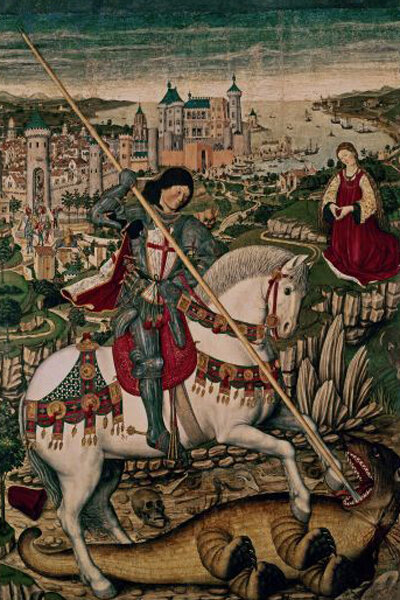This 10th century legend took place in the fictional town of Lasia, which had a pond as large as a lake and where a plague-bearing dragon controlled the countryside.
To keep it at bay, the people fed it two sheep a day, and when they ran out of sheep, offered their own children, chosen by lottery. One day, the lot fell upon the daughter of the king, who, after offering the people all his gold, silver, and half his kingdom if she were spared (and was turned down), sent his daughter to the lake, dressed as a bride, to be eaten by the dragon.
By chance, St. George rode past the lake, charged the dragon on horseback after fortifying himself with the sign of the cross, and severely wounded the dragon. The princess tossed him her girdle, which St. George put around the beast’s neck, which then had to tamely follow her like a dog on a leash.
After St. George led the dragon back to the city, whose people were terrified, he said he would slay the dragon if they consented to become Christians and be baptized. The king and residents converted to Christianity, after which St. George slew the dragon and the body was rolled out of the city on four ox carts.
"As St. George figure, Harry is implicitly fighting not only for the preservation of Great Britain and Europe, but for Christ and all Christendom, against Voldemort as dialectic between good and evil,” writes Fisk University’s Dr. Jill Clark in “The Allegorical Significance of J.K. Rowling’s Fantastic Mythological Menagerie.”
"Within Rowling's alchemical symbolism is embedded the Christian mystical allegory of St. George and the dragon, which works because the history of early Christianity is wrapped in the history of the occult and alchemy.”





